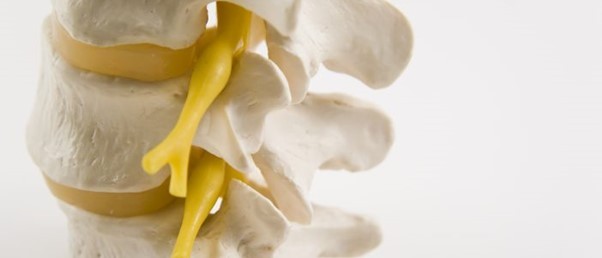How can we predict bone loss in premenopausal women?

Researchers discover that measuring the level of anti-Mullerian hormone in premenopausal women could predict bone loss, and lead to early intervention of osteoporosis.
The transition to menopause spans roughly 3 years and is concluded by the final menstrual period. Among other symptoms, such as irregular menstrual cycles, mood and sleep disorders, and hot flashes, the transition can be accompanied by bone loss. Now, a research group has discovered how to predict whether bone loss has started, or is about to begin.
Bone loss is an important symptom that needs to be tackled promptly to avoid significant health issues in premenopausal women. Bone loss tends to begin about a year before a women’s last period; however, as we can’t predict when a women’s last period will happen, it is difficult to anticipate when bone loss will begin.
To determine how to reliably predict bone loss, researchers from the University of California, Los Angeles (UCLA; CA, USA) have examined data from the Study of Women’s Health Across the Nation (SWAN), which is a multisite and multi-ethnic study looking at the transition to menopause.
 Is that an oral male contraceptive on the horizon?
Is that an oral male contraceptive on the horizon?
It seems reproductive autonomy for all is on the way, as men may finally get their own oral contraception without any obvious side effects.
The team discovered that for women who are 42 or older and are not yet postmenopausal, levels of anti-Mullerian hormone (AMH) can be used to track bone loss, as the levels of this hormone decrease as a woman nears her last period.
Specifically, they found that 17% of premenopausal women will have lost a significant portion of their peak bone mass within 2 to 3 years of the date a physician makes the prediction. In comparison, 33% of women with less than 50 picograms of AMH per milliliter (pg/mL) of blood, will have lost a significant portion of peak bone mass over the same timeframe.
Similarly, 42% of women in early perimenopause, the time when the body begins to transition to menopause, will have lost a significant portion of peak bone mass within 2 to 3 years. During perimenopause, irregular bleeding with no more than a gap of 3 months occurs. However, 65% of early perimenopausal women with AMH levels below 25 pg/mL, will have lost a significant portion of peak bone mass in that time.
A few limitations must be noted, such as the fact that the study did not include women who began menopause before age 42, nor did it include Hispanic women. In addition, the findings cannot be applied to women who are already taking osteoporosis medications, have had a hysterectomy before their last period, or have taken sex hormones during the transition to menopause. Nevertheless, the findings point toward an important indicator for physicians to use when monitoring the health of premenopausal women.
“These findings make feasible the designing and testing of midlife interventions to prevent or delay osteoporosis in women,” the authors of the study concluded.